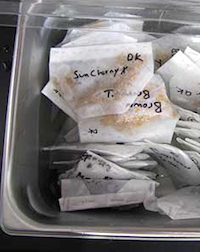In an April 4, 2016 email message from Gene McAvoy, Extension Director, Hendry County, Florida, he says that Florida pepper crops have above normal pepper weevil infestations this spring. Strong market prices are enticing farmers to hold on to their pepper plantings longer than usual allowing weevil populations to increase.
What this may mean for New Jersey’s 2016 pepper production isn’t clear, but processors importing pepper fruit from Florida to New Jersey may increase the odds of pepper weevil infestations here. [Read more…]


